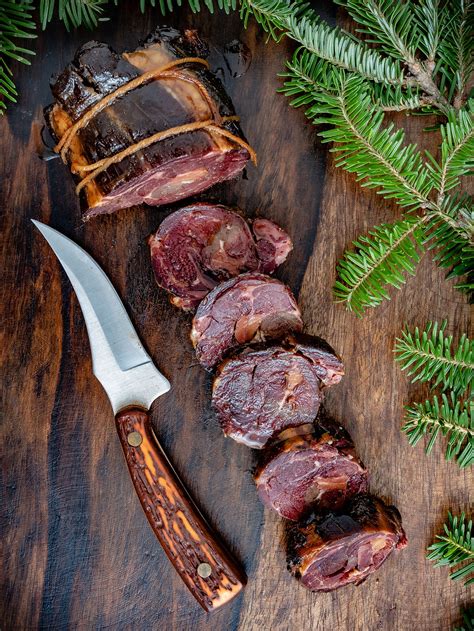Transforming Tough Deer Ham into a Culinary Masterpiece
Deer ham, while a prized hunting trophy for many, often presents a culinary challenge. Its inherent toughness can be a deterrent, leading to disappointing meals unless handled correctly. But fear not, fellow venison enthusiasts! With the right techniques, that tough deer ham can be transformed into a melt-in-your-mouth culinary masterpiece. This article will guide you through the process, from preparation to serving, ensuring you enjoy the fruits of your hunt to the fullest.
Why is Deer Ham Tough?
Before diving into the cooking process, it's important to understand why deer ham can be tough. Unlike the tenderloins, deer ham is a muscle group that works hard during the animal's life. This constant use results in dense connective tissue, which translates to toughness when cooked improperly. The solution lies in breaking down this connective tissue.
How to Tenderize Deer Ham: The Key to Success
The key to transforming tough deer ham is proper tenderization. This involves breaking down the tough collagen and elastin fibers within the meat. Here's a breakdown of effective methods:
1. The Low and Slow Approach: Braising and Slow Cooking
This is arguably the most effective method for tough deer ham. Braising involves searing the ham to develop flavor, then simmering it gently in liquid for an extended period. The low and slow cooking process breaks down the tough connective tissue, resulting in incredibly tender meat.
- Searing: Start by searing the ham in a hot pan with a little oil. This creates a delicious crust and enhances the flavor.
- Simmering: Submerge the seared ham in a flavorful liquid (broth, wine, beer, or a combination) with aromatics like onions, garlic, and herbs. Simmer gently on low heat for several hours, or even overnight, until the meat is fork-tender.
2. Pressure Cooking for Speed and Tenderness
Pressure cooking offers a faster alternative to braising, achieving similar results in a fraction of the time. The high pressure breaks down the connective tissue effectively, resulting in tender meat. Follow the manufacturer's instructions for your specific pressure cooker.
3. Marinating for Flavor and Tenderness
Marinating the deer ham before cooking can help to tenderize the meat and add incredible flavor. Acidic marinades, like those containing vinegar or citrus juices, can help to break down some of the tougher fibers. A marinade incorporating olive oil, garlic, herbs, and a touch of acidity is recommended.
Frequently Asked Questions (PAA)
Here are some common questions surrounding deer ham preparation, answered to help you on your culinary journey:
How long should I cook deer ham?
The cooking time for deer ham varies depending on the method used and the size of the ham. For braising, expect to cook for at least 4-6 hours, or even longer for very large hams. Pressure cooking can significantly reduce this time, often to around 1-2 hours. Always ensure the meat is fork-tender before removing it from the heat.
What's the best way to store leftover deer ham?
Leftover deer ham should be stored in an airtight container in the refrigerator for up to 3-4 days. It can also be frozen for longer storage.
Can I use a crockpot to cook deer ham?
Yes, a crockpot is an excellent tool for slow cooking deer ham. Follow similar methods to braising, ensuring the ham is submerged in liquid. Cooking times will be longer than with pressure cooking but shorter than traditional stovetop braising.
What are some good side dishes to serve with deer ham?
Deer ham pairs well with a variety of sides, including mashed potatoes, roasted vegetables, wild rice pilaf, and creamy polenta.
Serving Your Culinary Masterpiece
Once your deer ham is cooked to perfection, you can shred it, slice it, or serve it whole, depending on your preference. The tender, flavorful meat is perfect for sandwiches, salads, tacos, or simply enjoyed on its own. Remember to let the ham rest for a few minutes before slicing to allow the juices to redistribute, ensuring maximum tenderness and flavor.
Conclusion
Transforming tough deer ham into a culinary masterpiece is achievable with the right techniques. By understanding the nature of the meat and employing methods like braising, pressure cooking, and marinating, you can create a dish that’s both tender and flavorful. So, embrace the challenge, experiment with different methods, and savor the reward of a delicious meal made from your hard-earned venison.

